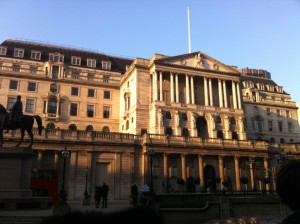Drivers difficult to determine
When the common currency came into being almost twenty years ago, it was said at the time that the sheer liquidity that would be created would see the market evolve in ways that could not be imagined. That conglomeration of currency pairs and crosses, that has now reached nineteen, when traded using the current technology available has created a depth of market that is such a juggernaut that it is almost impossible to imagine anything other than ranges becoming ever narrower no matter how activity increases.
ECB President Mario Draghi remains concerned about a strengthening of the euro and its effect on the weaker economies of the region, but the risk remains insignificant and is fading almost daily.
Is lack of volatility a concern to anyone? Well, apart from those trying to earn an income from trading it is difficult to make a case. Central Bank’s major consideration is the volatility of their currency and those importing and exporting goods are constantly concerned about volatility, so the short answer is no. The need to hedge currency exposures will become a thing of the past as it becomes more expensive to hedge than to leave positions open. This Utopian scenario is not upon us yet, but it is certainly deserving of consideration.
Sterling facing a defining week.
 “Will they or won’t they” could be replaced by “surely they won’t now” as the most important week for UK data in some time finally comes around. Starting with tomorrows employment report where wage increases could reach close to 3% and followed by Wednesday’s inflation report where headline CPI could be as “low” as 2.5%, there are a series of combinations which could confirm or deny a hike in interest rates next month.
“Will they or won’t they” could be replaced by “surely they won’t now” as the most important week for UK data in some time finally comes around. Starting with tomorrows employment report where wage increases could reach close to 3% and followed by Wednesday’s inflation report where headline CPI could be as “low” as 2.5%, there are a series of combinations which could confirm or deny a hike in interest rates next month.
With what seems like several MPC members baying for a hike it is going to take discipline for the MPC to stay on hold. Anything close to neutral; possibly CPI at 2.6% and wage inflation at 2.7% or even 2.8% will leave the market still expecting a hike but to remove the suggestion or to even skew the bias away from a hike it will take truly awful wage data.
It seems that since volatility in the common currency is so low and other major currencies don’t have the depth of market (except the Jpy where monetary policy is tightly screwed down) that traders have turned to Sterling to try to extract value.
The market is severely overbought and hasn’t seen a significant correction since the end of March as rate hike expectations continue to come to the surface.
Syrian tension remains despite the strike.
 As a driver of geopolitical risk, the surgical strikes carried out by U.S. British and French forces over the weekend were always likely to lower tensions provided they were carried out as intended.
As a driver of geopolitical risk, the surgical strikes carried out by U.S. British and French forces over the weekend were always likely to lower tensions provided they were carried out as intended.
The Russian response has, so far, been purely verbal and should remain so although it is ironic that they have been quick to use the UN to label the strikes “illegal” given the actions they were in retaliation for.
The dollar has barely responded and, again, this is a factor of liquidity. The JPY has also been a victim (or possibly beneficiary) of a downturn in volatility as the BoJ has continued to be very transparent in its monetary policy intentions.
The natural evolution of the market seems to be reaching something of a watershed where an avalanche of liquidity is being easily “mopped up” by automated pricing and market depth that allows Central Banks to consider policy without too much concern over the value of their currency no matter what they say.
With tensions hopefully being turned down to simmer in the Middle East and the entirely spurious phoney trade war likely to end in talks, it is going to prove difficult for Q2 to live up to its usual billing as the money-making quarter before the market slinks off for its summer vacation.
















